The infamous “007 Knife” isn’t a gravity knife or a switchblade. It isn’t even a particularly well made knife. During the 1970s, however, it was plentiful and cheap, particularly in the New York City area. Every corner store sold these crude, wood-handled, rocker-bar locking folding knives. As the knife proliferated, it inevitably became popular with kids and criminals alike — the people who most often gravitate toward cheap tools. That resulted in media denunciations of the knife, prompting parents throughout the New York area to confiscate 007 folders from the city’s youth. Various authorities decried the knife’s prevalence among the criminal class, even as New York’s counterculture embraced it.
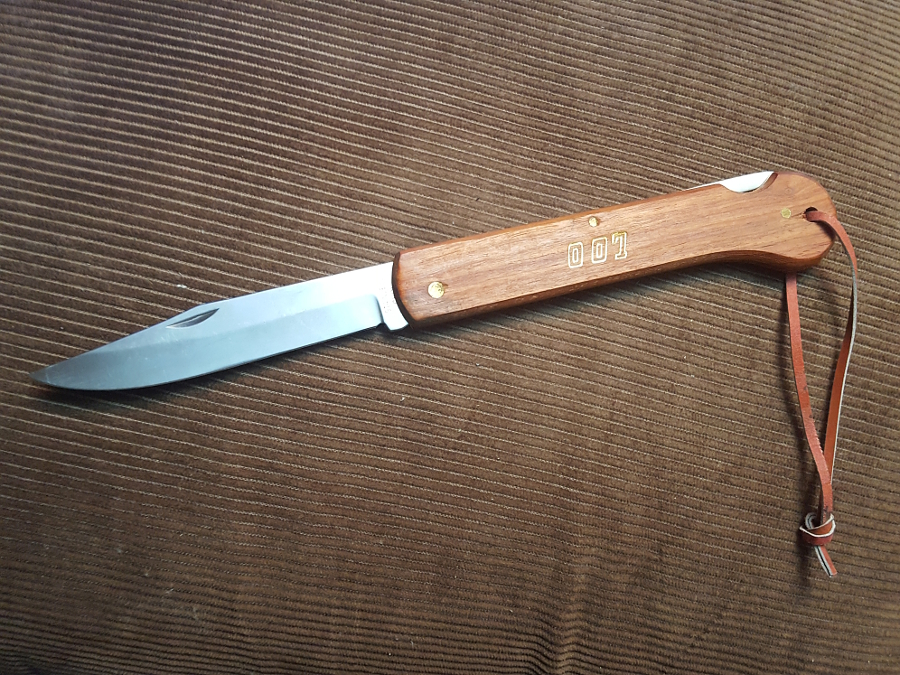
Vilifying a tool for the actions of human beings isn’t new. It’s a common impulse. It’s been done with firearms countless times, such as the furor over “Saturday Night Specials,” and it’s been done with knives. The South African piece, “Knives out for criminals,” is a great example — because the cheap, commonly available Okapi knife is popular with the criminal class, the knife itself has been blamed for crime. Much earlier and more famously, movies featuring switchblade-wielding juvenile delinquents drove the many bans in the 1950s on what was then a common, cheaply made, cheaply constructed pocketknife.
There’s nothing remarkable about the 007 as a design. At first glance, it resembles an elongated Buck 110, once the standard by which rocker-bar locking folding knives were measured. Steven Dick, who for years was the editor of Tactical Knives magazine, confirmed for The Martialist that the design isn’t original.
“The 007 was actually a knockoff of a KA-BAR model from the Sixties of much better quality,” he explains. “Both were common in military units during the late Sixties when I was still in. I liked the KA-BAR model and I know several people here in the Northwest that favored it for a hunting knife.”
There are two or three major variations of the 007 knife. The most basic or “standard” model seems to be a 10-inch rocker-bar locking folding knife with a 4.25-inch clip-point blade (4 of it cutting edge) and a wooden handle. There is a nail nick for opening that no one will ever use. The blade stock is just a sixteenth of an inch. A leather thong is typically included. Workmanship is poor to mediocre. There are versions that are larger overall and there are others that are shorter overall. There is also a common variant, the Guardian 007, that pops up now and again. Usually, though, what defines a 007 knife is the wood handle (with “007” etched into it) and the larger-than-average overall size.
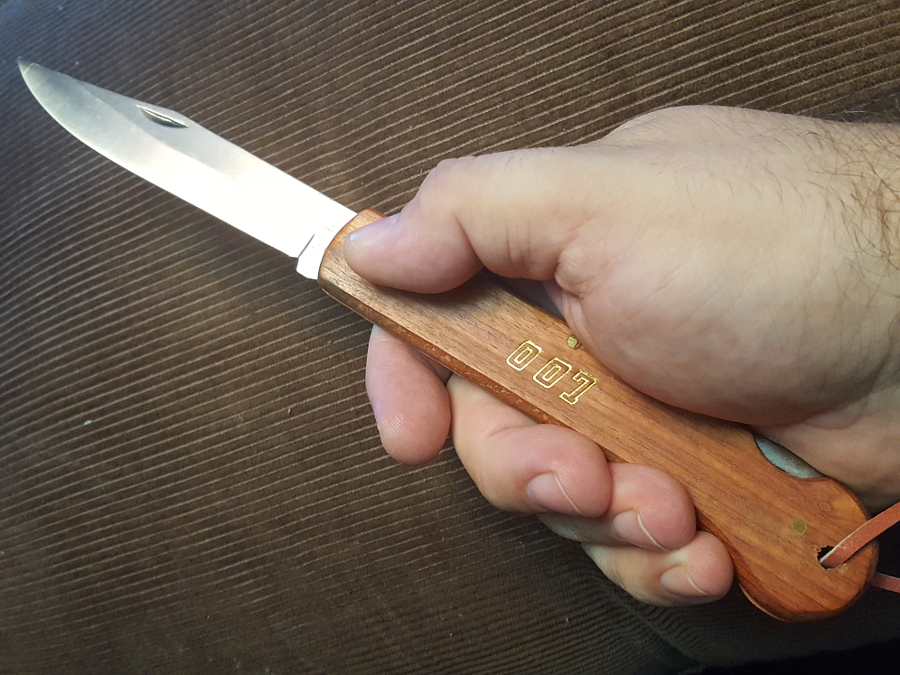
In all honesty, it’s a wretched knife. The locking bar is thin and feels cheap. The steel of the blade is equally chintzy. It will take a sharp edge, but won’t hold it for long. I wouldn’t trust that lock to keep the knife open while doing anything that put pressure on the mechanism. The ergonomics aren’t terrible, though, and the knife is flat enough and light enough to be easily carried despite its length… but it’s a garbage blade at best, suitable only for chores on which you wouldn’t waste a “good” knife. What made the knife so common was its low price and the fact that plenty of retail outlets carried it. Still, that weak lock, and thus the fact that you could snap the knife open with one hand, probably factored into its popularity.
One of the biggest misconceptions about the 007 knife is that it is a”gravity knife.” It isn’t. A gravity knife is a design originally created for paratroopers in which the knife drops out and down into position when you press a button. The 007 won’t do that, but you can cheat to open it dramatically and quickly. The spring creating tension for the locking mechanism is relatively weak. This means that the blade can be snapped open with a flick of the wrist.
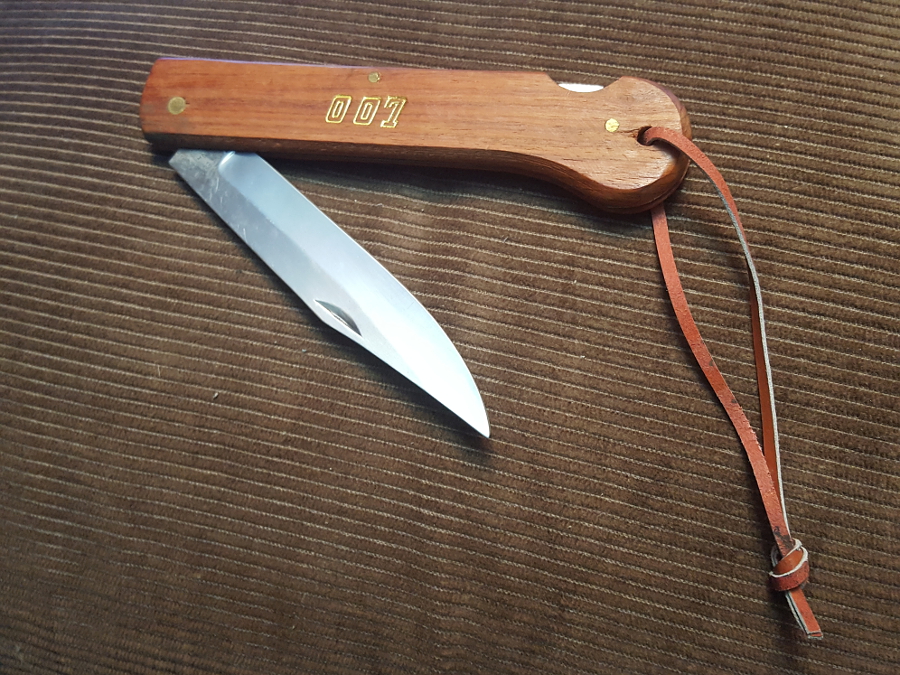
It’s a small distinction, but an important one. New York City has, relatively recently, begun prosecuting as violations of the New York State Penal Code any possession of a knife that can be opened with one hand. Across the pond, such knives are called “flick knives,” a term that can apply to switchblades and one-hand folders alike.
The Village Voice‘s Jon Campbell published, in 2014, an excellent piece about the misapplication of 1950s knife laws to contemporary New Yorkers. “Since so many arrests stem from [officers spotting the pocket clip of a locking folding knife on citizens’ pockets], attorneys have tried, repeatedly, to argue that the clip itself shouldn’t constitute probable cause. A wide variety of tools have pocket clips, after all, and there’s no way to tell what’s attached to the other end, but the courts have so far rejected that defense. The ‘flick’ itself is another heavily litigated issue. [An attorney cited in the Village Voice piece] says she routinely has clients arrested for possession of supposedly ‘flickable’ knives that prove far less flickable when she herself inspects them… [And] defendants often report that arresting officers have to make several attempts to flick a knife open during arrests.” That overzealous attitude on the part of NYC law enforcement can probably be traced all the way back to the 1970s and the 007 knife.
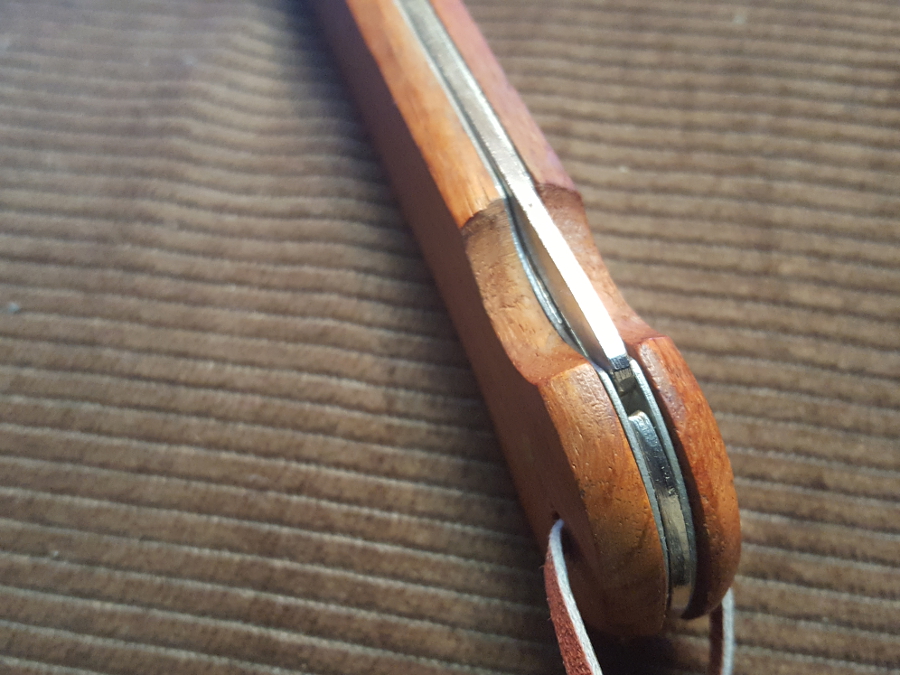
Another reason for the 007 knife’s infamy is the allegation that it was a blade like this that Sid Vicious used to stab and kill his girlfriend Nancy. Peter Gunn, who wrote an incredibly comprehensive article on the 007 knife titled NYC History: The 007 Knife, comments on this and on the knife’s reputation. “Accounts differ,” he writes, “but that self-same 007 knife is often identified as the one that Sid Vicious killed Nancy Spungen with… The more you read about NYC (low)life in the 70’s, the more you notice the 007. Due to its cheap price, ease of availability, and menacing size, the 007 knife was perfect for violent crime.”
That violent crime was the subject of an interesting piece more than a decade ago by Steven Kurutz. Reporting for the New York Times in 2004, Kurutz spoke of the prevalence of muggings in 1970s New York City. It was this bleak age of crime that gave rise to such vigilante fantasies as Charles Bronson’s Death Wish, released in 1974. The film depicts a city so rife with crime that citizens are victimized whenever the step outdoors… and that’s not too far off from the reality of the Big Apple in the Seventies. (Ten years later, as the city continued to crumble, Bernhard Goetz shot four muggers in a Manhattan subway car.)
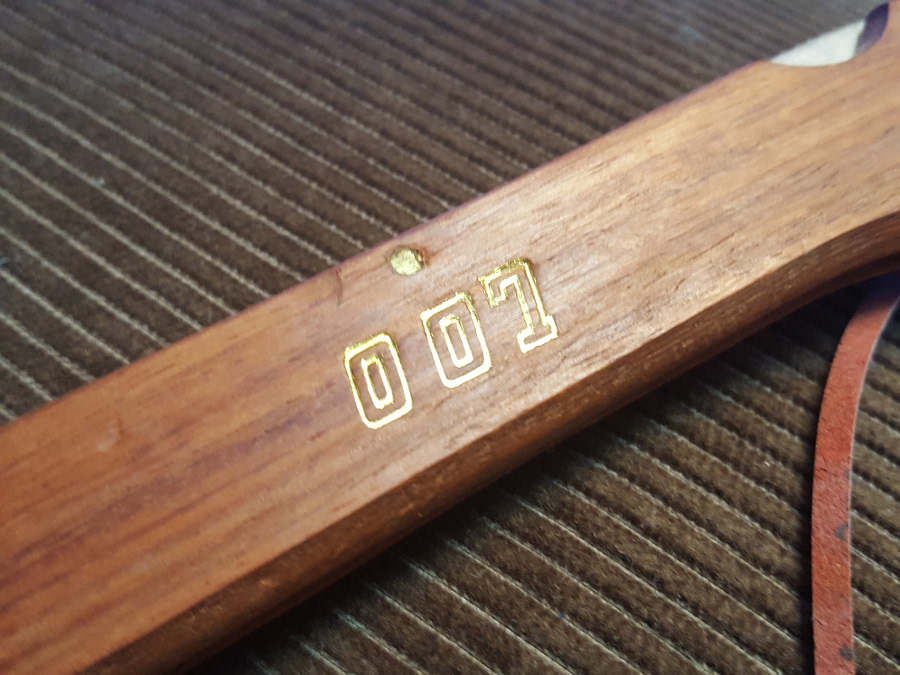
“It was in the heart of this era,” writes Kurutz, “that perhaps the definitive study of the crime, its perpetrators and its effect on the culture as a whole made its appearance. That work was Jones: Portrait of a Mugger, written by James Willwerth, a veteran Time magazine reporter, and published 30 years ago. Shadowing a mugger who ‘worked’ the Lower East Side, the book offers a gripping street-level perspective… Bands of muggers worked Times Square. Renegade muggers prowled the parks and the subways. With vast swaths of the city deemed unsafe, New Yorkers hemmed themselves in. The muggers, many of them drug-sick and desperate for cash, responded by going to their victims, attacking them in elevators, hallways and darkened apartment lobbies. Muggers like Jones…”
Kurutz’ account, of course, includes a reference to the 007 knife. “Holding a concealed 007 knife, a model popular among muggers for its long blade and quick release, Jones hit the streets in the early evenings and mugged in dark, contained spaces like apartment hallways,” he reports. “But he used force only when the victim offered a struggle, a fact the writer often passed on to friends… The book [by Willwerth] can be read as a kind of field guide to urban survival. At its most compelling moments, though, it depicts the city through the eyes of a seasoned criminal.”
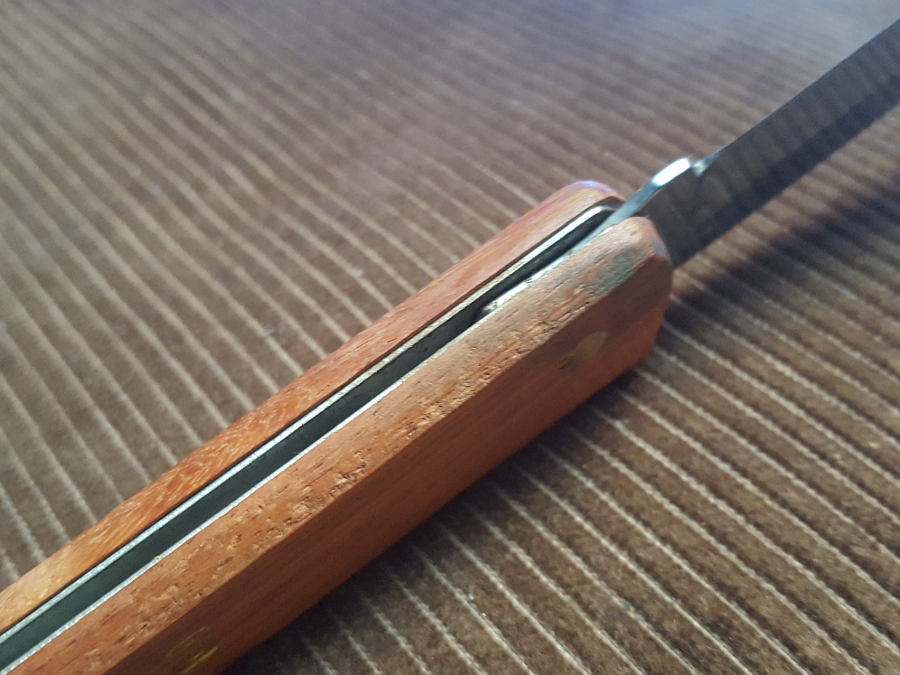
Peter Gunn’s piece on New York City history discusses the mugging issues and Willwerth’s book as well. Street muggings and other violent crime are inseparable from the lurid image of the 007 knife — heavy baggage to hang around the neck of so crude and unremarkable a lockback folder. “It was wielded by every two-bit stick up kid and gang member in all five boroughs,” Gunn’s poetic account concludes. “To an average subway commuter or late night stroller, it was the stuff of nightmares. This was the thing that caused you to give up your wallet and your watch. Apparently, the proverbial ‘junkie with a switchblade’ was really a ‘junkie with a 007.'”
The legacy of that culture of criminality outlasted the Seventies. In 2013, a man who served 14 years in prison was exonerated by a New York Supreme Court justice. Johnnie O’Neal was charged with raping a woman at knifepoint in 1983. The knife was said to be a 007 model. Unless he was later apprehended and convicted for another crime, the real rapist was never caught.
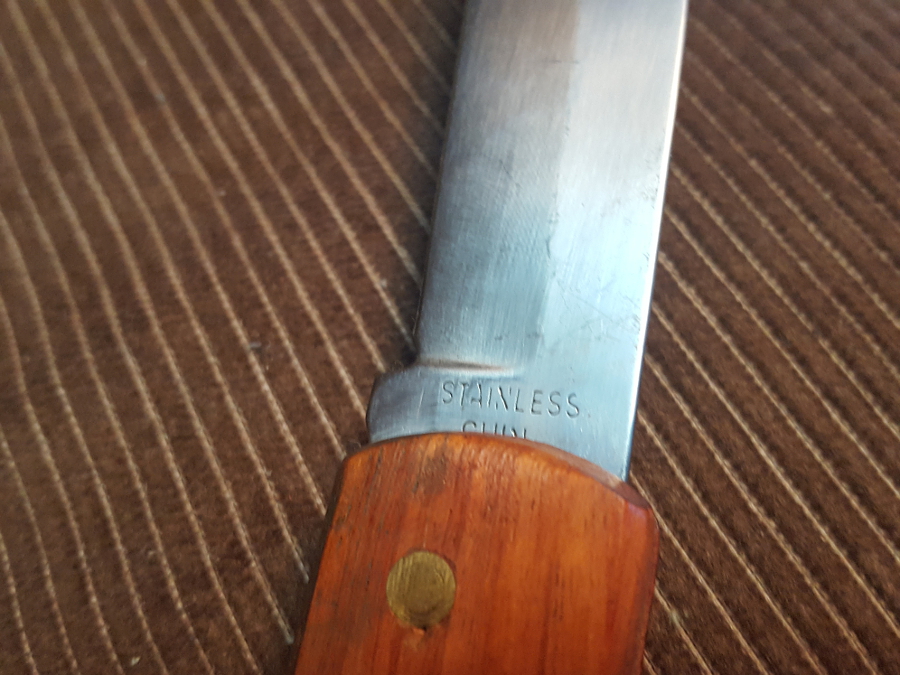
Don’t think, however, that the 007 knife was specific to New York City or even to the United States. It is heavily associated with 1970s NYC, but it was widely imported and found in other states, not to mention in countries around the world during that time (and years later). In 1985, for example (one year after Bernhard Goetz decided one of his muggers didn’t look so bad and pumped another round into the fellow’s prone form) a British police officer named Keith Blakelock was stabbed 43 times and nearly decapitated during the Broadwater Farm riots in Tottenham. One of the weapons used, which was left lodged in Blakelock’s neck, was alleged to be a 007 knife. The murder has never been solved.
There’s some evidence that some or even many of the knives reputed to be 007 knives might simply be other cheap blades. If “007” became street slang for any folding knife, particularly knives used in a crime, the reputation 007 knives have for figuring in criminal conduct might be somewhat exaggerated. For example, an unofficial website devoted to Sid and Nancy reprints a 1978 investigative report by Anne Bardach that disputes the identification of Nancy’s murder weapon as a 007. Rather, she reports, the knife was a very similar lockback folder bearing the name “Jaguar.”
“Forensic’s prize at the Chelsea, the suspected murder weapon, was a Jaguar K-I I folding knife with a 5″ blade, complete with the appropriate blood stains and fingerprints,” Bardach reportedly wrote. “The 007 knife, frequently misreported in the press as the murder weapon[,] was only one of several knives in Sid Vicious’ collection. According to Neon Leon, the Jaguar knife ‘was a gift he got that day from Nancy… to protect himself.’ Detective Gerald Thomas confirms that ‘more than one knife was confiscated.'”
Peter Gunn writes that while the 007 knife has long since fallen out of favor (and largely off the market), the knife “cast a long shadow over the 1970s.” He’s not wrong. Many of the web searches conducted for this knife return hits that are people looking to buy one — not for all their mugging needs, but simply to possess this nostalgic piece of 1970s knife lore. Its colorful and frequently criminal history elevates the knife from unremarkable “junk” folder to something integral to Seventies punk folklore, criminal culture, and knife-fighting mythology. No doubt those 007 blades propelled many a teenage boy to become the armed and aware citizen he is today. Unlike those who used the knife for criminal purposes (and were caught doing it), we will never have an accounting for the knife’s influence on law-abiding knife owners. It is nonetheless a great deal of fun to speculate.
Worst knife I have ever owned had several friends cut themselves because the lock failed and the blade came down on their figures
I had one back in the 70s while I grow up in the projects of the Lower East Side in NYC.
Sadly I lost the knife
I had one of these back in the day as part of my collection, but got lost in a move. I would buy one today if someone has any that are reasonable. I just saw one on e-bay for over 100.00. I paid 5.00 in the 70’s
I have one, what are you looking to spend?
Hey mark do you still have it. Or any other kinds of knives if so please email me at slurper60@gmail.com thank you
The one I had must’ve bern a later iteration with a pot-metal handle and brown plastic panels with “007” in faux gold leaf instead of the all-wood handle. I picked it up in the mid ’80s at the Valley Indoor Swap Meet in Canoga Park, CA probably for around $5. I had it for years before I lost it, long after the plastic panels came off. Honestly, I would like a quality version of this pattern and size of folder.
I have one
I bought a 007 knock-off in the 70s at TSS (Times Square Stores) in Middle Village Queens for five dollars. I say knock-off because this one was stamped “707” and it had a red leather thong, but it looked exactly like a regular 007. There was a much longer model as well. I think it was referred to as “Super 707”. I didn’t buy that one. A drunken friend of mine asked to see it one night, then without warning tried to run it through the white plastic covering the fluorescent light in a telephone booth. Luckily the blade bent sideways instead of closing on his fingers. With the force he thrusted upwards at the light, he would have been severely injured if the knife closed on him, instead of bending like it did. God looks out drunks sometimes. I threw the bent knife down the sewer.
Small world, grew up in Maspeth in the 70’s & 80’s and shopped at TSS all the time. I know the knives you are talking about, my friend bought his Jumbo 707 there, I already had a 007 I got in the city in Times Square. It seemed like everyone carried a 007 back then.
He might have been electrocuted too if the blade hadn`t folded lol
007 is my part of my moniker because of this shank.
The official longer one was called the 747.
I grew up in Boston (Roxbury) and carried both as a kid.
007 is part of my moniker because of this…..shank.
I stumbled across this article because I was searching to see what the deal was with this….crude tool…..from my youth.
I grew up in Boston (Roxbury) and carried this and the official longer, bigger one: the 747.
small world grew up in ridgewood. spent many a friday evening in TSS shopping with family, racing my hot wheels down the escalators. Funny how we all from that area are into the OO7’s
Sid had a 007 and it really does sound like it was ubiquitous in NYC… so it really doesn’t seem like an open and shut case that he killed her, does it?
Had one growing up in Newark NJ, forgot what i paid for it. i thought i was a little badass carrying it at the age of 10. Until my aunt found it and then threw it in the garbage. What i wouldn’t do to get it back.
I’m from Kansas and have never heard of this knife. I remember the ‘70’s and my first knife was a Kamp King scout type knife. Wouldn’t mind finding one of these 007’s.